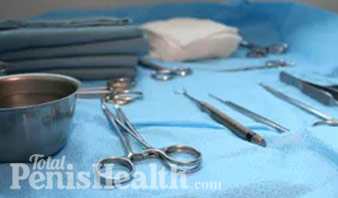
Peyronie's disease is a very uncomfortable condition suffered by millions of men around the world. It is a condition that sometimes causes physical pain; it almost always causes emotional pain and discomfort. Fortunately, it's not something you necessarily have to live with. There are several different treatment options available from surgery to traction devices and even pharmaceutical products.

Before discussing the options, let's talk about what Peyronie's disease is and what causes it. In medical terms Peyronie's Disease is a condition in which scar tissue develops somewhere underneath the skin of the penis. This scar tissue interferes with normal erections and, more often than not, leads to malformations when the penis is in erect state. The malformations can take the shape of lumps, twists, or even curvature along the shaft of the penis.
Symptoms of Peyronie's disease can include moderate to severe pain, curvature of the penis, an inability to maintain erections, and even a decrease in penis size. Note that not all men suffering from the condition exhibit all of the symptoms. In some rare cases, men can suffer from Peyronie's without ever experiencing any of the symptoms. These types of men can still be diagnosed because scar tissue can be felt using the fingers. The scar tissue feels like a hard lump or an extremely rigid rubber band around the shaft of the penis.
Though the medical community still does not agree on what causes Peyronie's disease, they do agree on treatment methods. If you're suffering from Peyronie's never forget the choice of treatment options is entirely up to you. Take the time to understand each one so you can make an informed decision. The treatment information below comes from sources including the Mayo Clinic, WebMD, and others.
 Surgery
SurgeryUltimately the choice of Peyronie's disease treatment is up to the individual patient and his doctor. You should always discuss all of your options before making a decision. Be prepared that your doctor will probably try to avoid surgery at all costs due to its risky nature. Peyronie's disease surgery carries with it the risks of erectile dysfunction, infection, and future scar formation. Your doctor may suggest at least 12 months of another treatment option before considering surgery.
Using a traction device might be your best bet during the first year of treatment. It is safe, easy to do, relatively comfortable, and fairly effective in most men. And even if it doesn't work for you, you've lost nothing in the process of trying. The Quick Extender Pro is the only extender that we've reviewed that offers a penis curvature correction edition made specifically to help treat Peyronie's Disease.
Whatever you do, don't give up. Peyronie's is treatable; you don't have to live with it for the rest of your life.